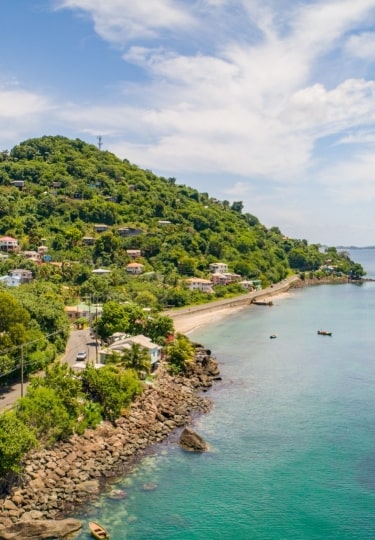We’re all familiar with the Caribbean’s most popular destinations. But what about the abundance of underrated Caribbean islands?
There’s Martinique, for example, with its distinct French culture. Or sleepy Bonaire, the “B” in the ABC Islands, with some of the best diving and snorkeling in the region. Or Dominica, famed for its mountainous landscape, untamed nature, and tumbling waterfalls.
Wherever your travels take you, think about visiting some of these lesser-known Caribbean islands and discovering their culture, nature, and lush landscapes.
Martinique
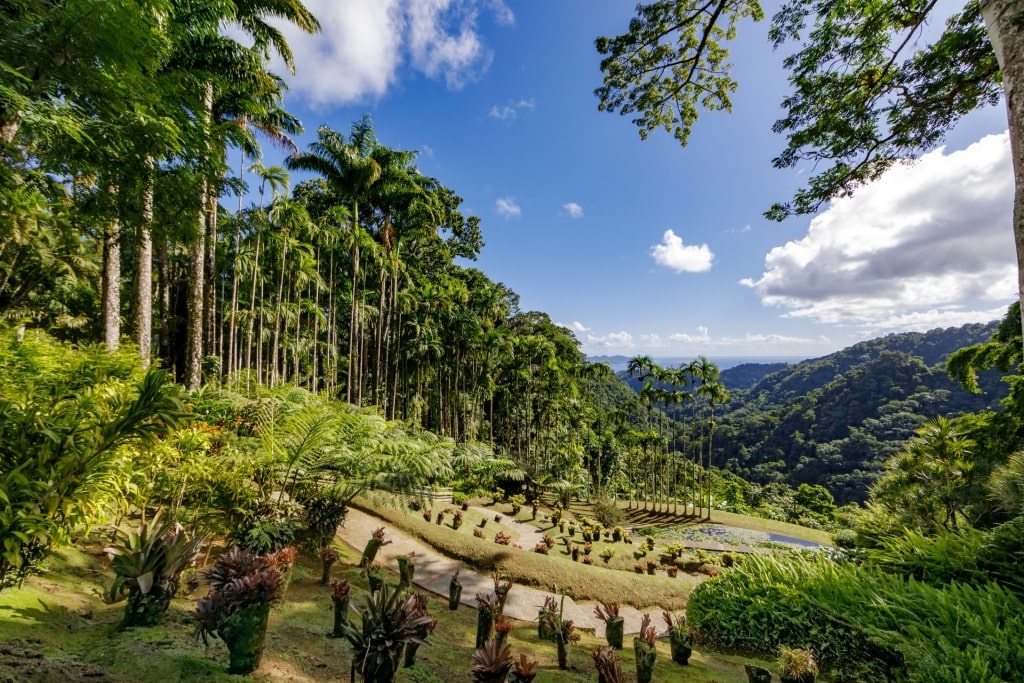
Balata Botanical Garden, Martinique
Mountainous Martinique is a French territory and represents a little slice of the motherland in the tropics. The currency is the Euro, and French is spoken alongside Creole. You’ll see patisseries in Fort-de-France selling freshly baked croissants and restaurants offering the plat du jour, or the dish of the day.
Fort-de-France itself has plenty to see. Commune with nature in the beautiful Balata Botanical Garden, where more than 3,000 species of plants flourish in the tropical sunshine. Tour Fort Saint-Louis and learn about French military history in the Caribbean.
Visit the remains of Château Dubuc, which harbors many dark secrets. Make time for some of the island’s glorious sandy beaches; Anse Dufour has spectacular snorkeling, for example.
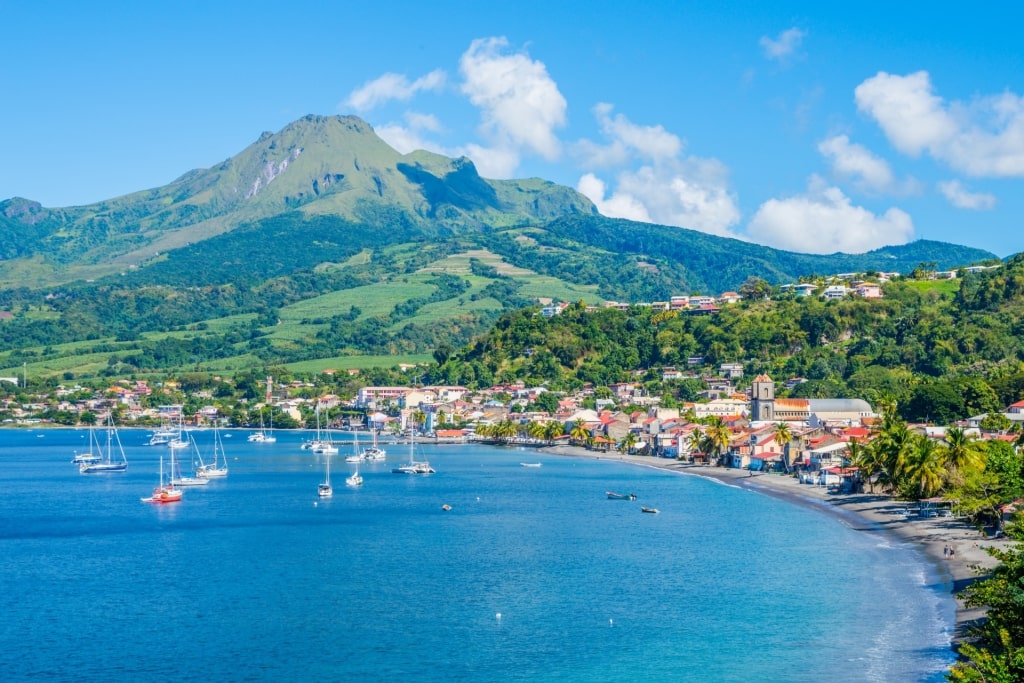
St. Pierre, Martinique
You could take a tour to explore beyond the capital. Martinique is one of the prettiest islands in the Caribbean, with steep, forested mountains plunging straight into the sparkling sea. Visit Le Carbet, where Columbus landed in 1502, and St. Pierre, once known as the “Paris of the Caribbean” for its glamor and architecture.
Nevis
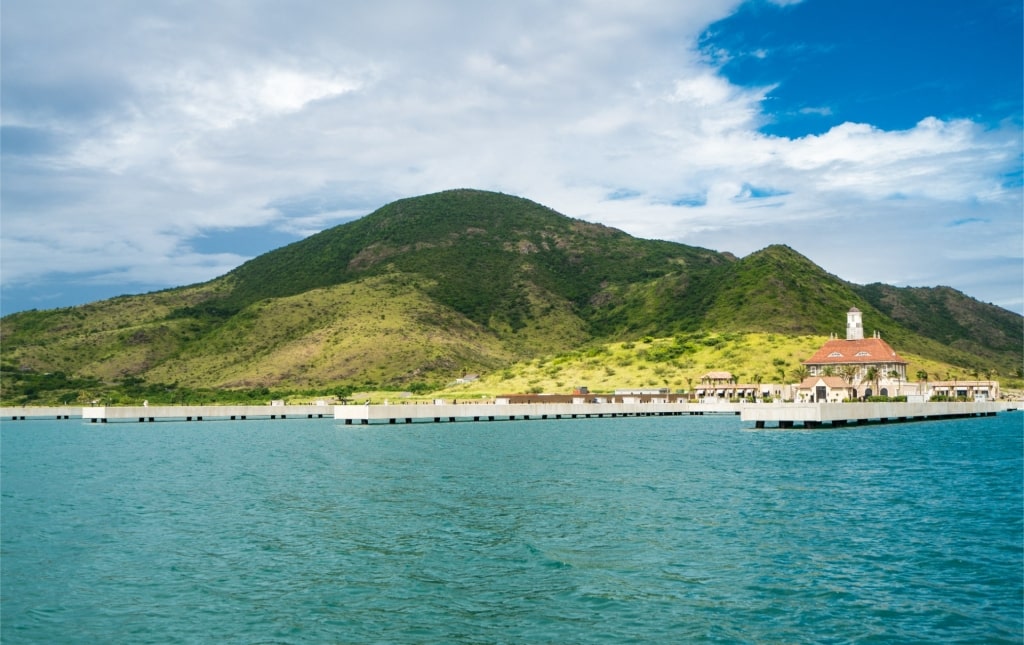
Nevis
Little sister of bustling St. Kitts, Nevis has a big claim to fame: This was the birthplace of Alexander Hamilton, one of the founding fathers of the United States.
If your travels take you to St. Kitts, it’s an easy 45-minute hop by ferry across to Charlestown, the capital of Nevis. You could also join a catamaran tour and sail across, with stops for snorkeling and maybe even a rum tasting.
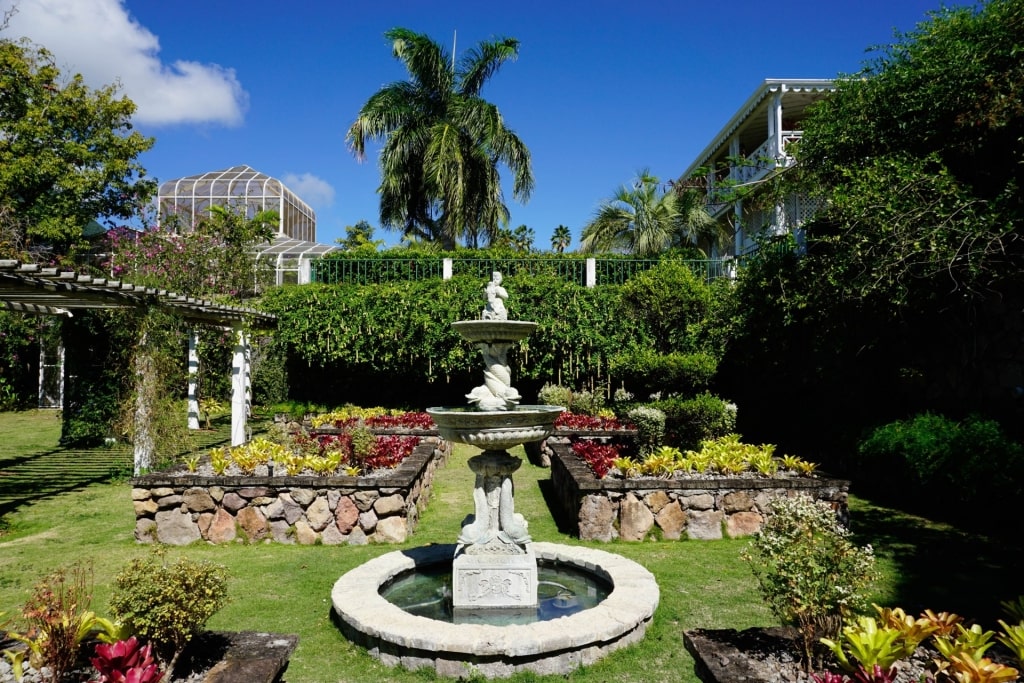
Botanical Gardens of Nevis
In Charlestown, you can see the house in which Hamilton was born and visit a small museum telling his life story. Close to town, the enchanting Botanical Gardens of Nevis is a paradise of bamboo groves, lily ponds, and orchid blossoms. The gardens are on land originally belonging to the Montpelier Estate, on which Horatio Nelson and Fanny Nesbit married in 1797.
If sunbathing and swimming is more your thing, you won’t be disappointed with Pinney’s Beach, one of the longest on the island. Along three miles of soft sand, you’ll find plenty of beach bars, as well as excellent snorkeling just offshore.
Bonaire
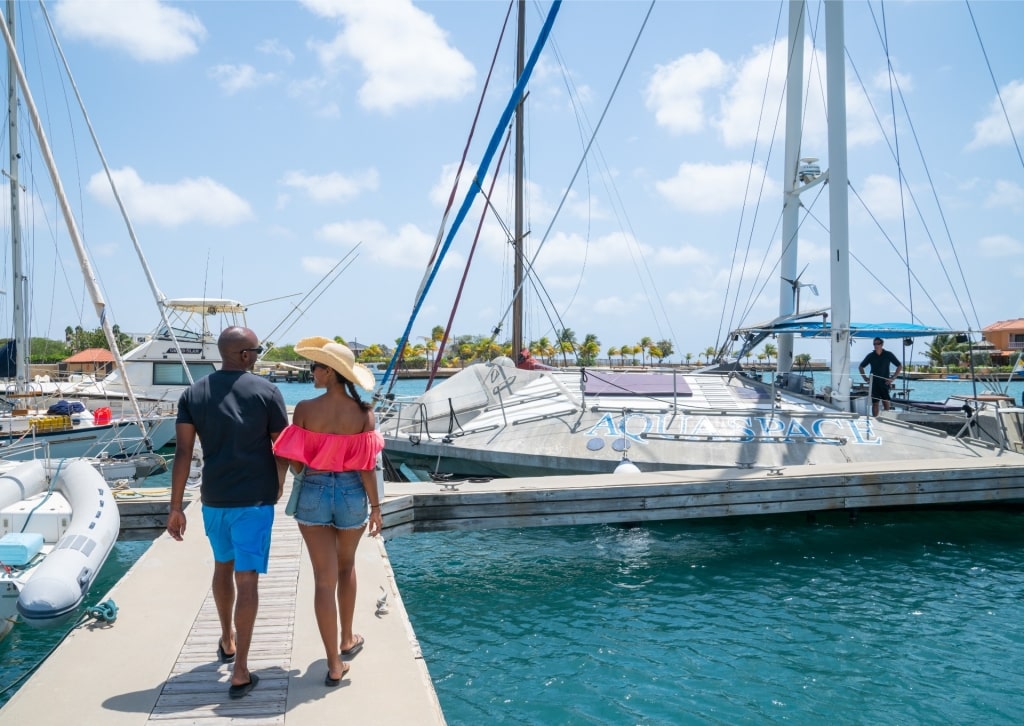
Bonaire
Lying to the east of Curaçao, close to the north coast of South America, Bonaire is different from much of the Caribbean in that its landscape is almost desert-like. Bonaire also has a distinctly Dutch feel; it’s a “special municipality” of the Netherlands, and you’ll come across Dutch language and signage, not to mention hints of Dutch cuisine amid the Spanish, Asian, and Creole influences.
The island is a beacon of ecotourism thanks to the extensive marine park that surrounds it, encompassing some 6,700 acres of reefs and drop-offs. The uninhabited islet of Klein Bonaire is one of the best places to admire the underwater world. It’s an easy hop from Kralendijk, the colorful little capital. The island is completely flat, with nothing here but low-lying scrub and white sand that slopes into the aquamarine shallows, where the reefs teem with life.
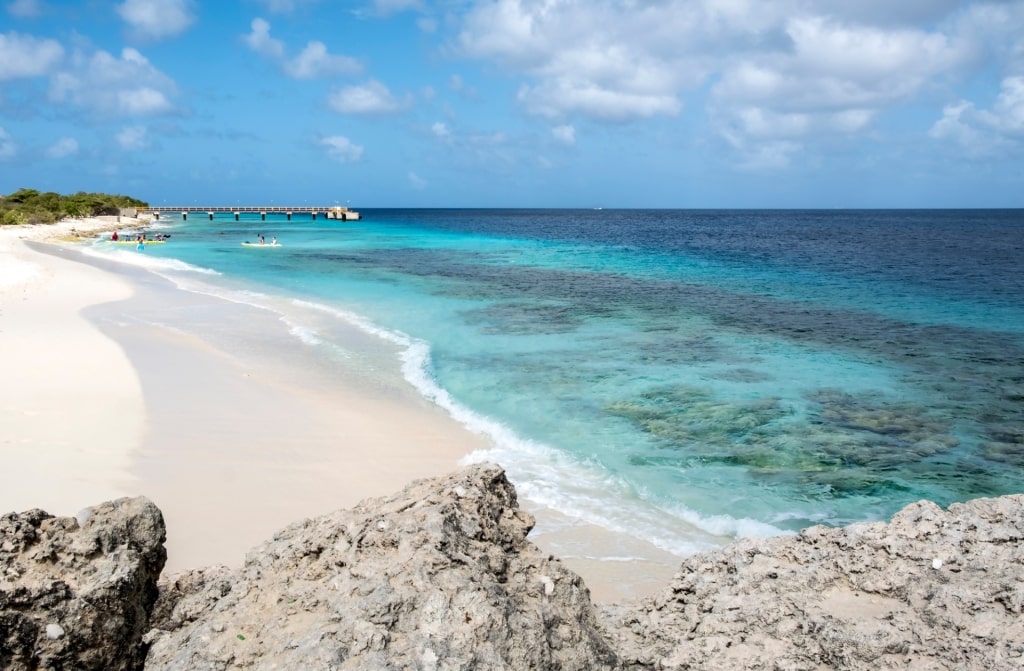
Te Amo Beach, Bonaire
One of the best beaches in Bonaire is Te Amo, a swath of white sand and turquoise water, where you could see different kinds of coral and dozens of species of tropical fish.
There’s also abundant nature above the water. Some 20 percent of the island is protected as the Washington Slagbaai National Park, a wildlife refuge where you can spot pink flamingos feeding in the shallow water. Donkeys and goats roam free, while iguanas bask in the sunshine. The park encompasses all sorts of terrains, from salt flats, where you can still see the former homes of slaves, to lush mangroves, rich in bird life.
Dominica
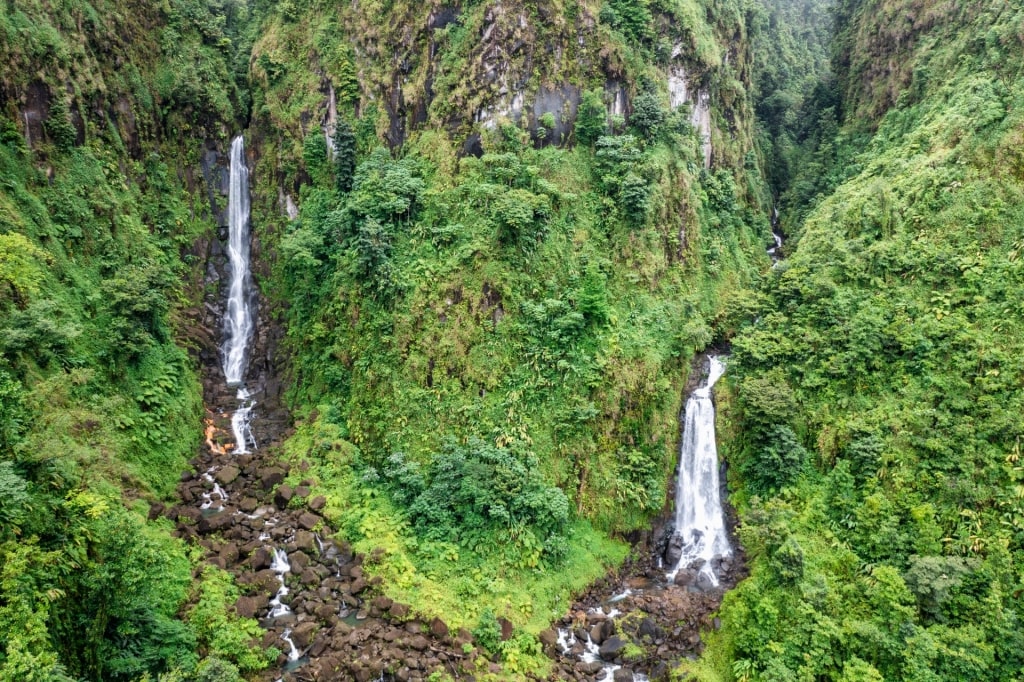
Trafalgar Falls, Dominica
You’ll soon see why Dominica, one of the most underrated Caribbean islands, is known as the “Nature Island”. Rather than chic beach resorts and shopping malls, this is a place for sheer-sided jade mountains, tumbling waterfalls, deep gorges, and rushing rivers.
All kinds of adventure can be had here, from hiking to the twin cascades of Trafalgar Falls to swimming in the Emerald Pool in Morne Trois Pitons National Park, up close to the 40-foot waterfall that feeds the pool. There are beaches, of course—some with black volcanic sand.
One of the best scuba diving spots in the Caribbean is Champagne Reef, where you can enjoy the unusual sensation of snorkeling over streams of tiny bubbles fizzing up from the ocean floor, resulting from underwater volcanic fumaroles.
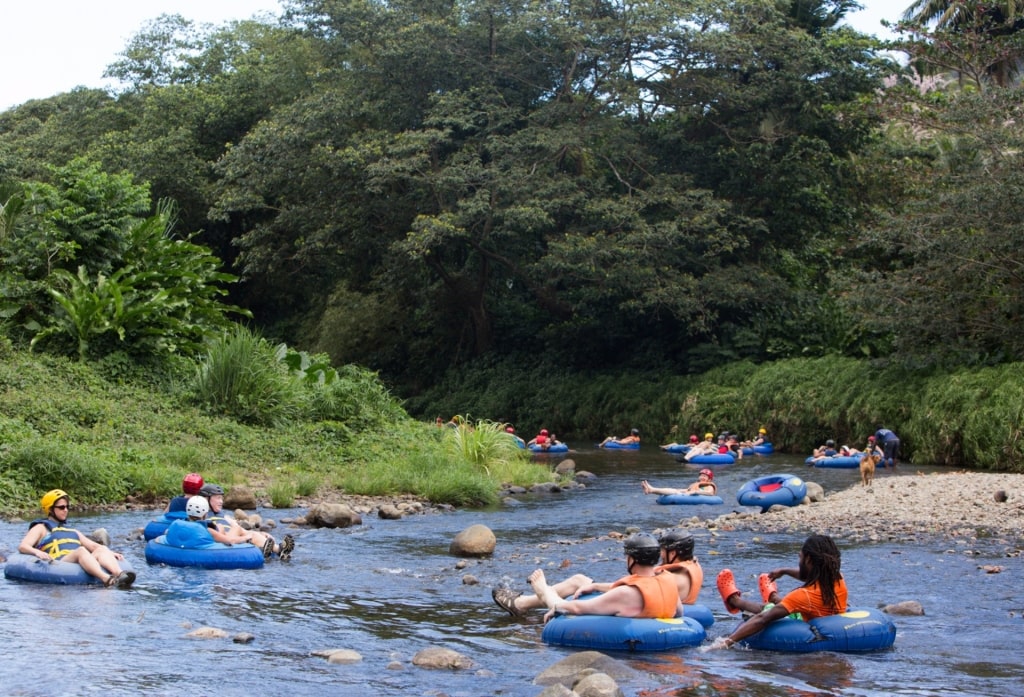
Hibiscus Eco-Village, Dominica
Learn about the island’s Kalinago heritage at the Hibiscus Eco-Village, the last territory of the Carib Indians, whose trades of raft building and baking cassava bread, among other skills, are being kept alive here.
From the village, you can try tubing, a blissful activity that involves no more effort than lying back into a giant inflatable tube and letting the river carry you over gentle rapids as you gaze up at birds flitting through the forest canopy.
Grenada
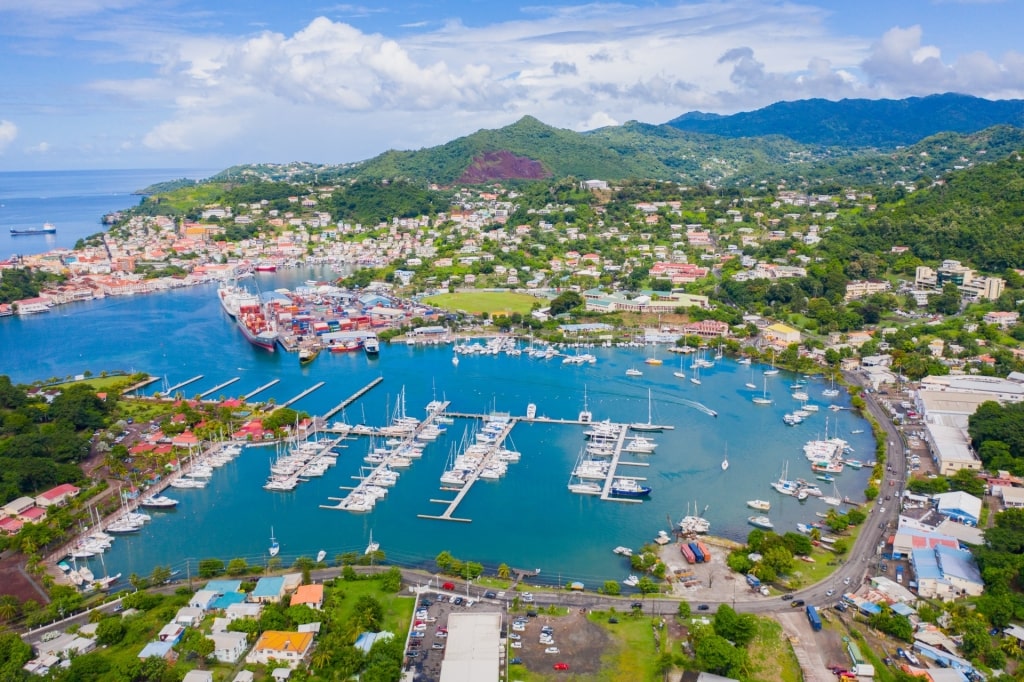
Grenada
Grenada is dubbed the “Spice Island” and for good reason; it’s one of the most important producers of nutmeg in the world. Wander around the market in St. George’s, the capital, and you’ll see all kinds of tempting produce on sale. Nutmegs aside, there are tiny sweet bananas, soursops, which make delicious juice, mounds of turmeric, cinnamon, cloves, and ginger.
Cocoa is grown here, too, and anybody with a sweet tooth will love the Jouvay Diamond Chocolate Factory, where you can learn all about chocolate production and enjoy a tasting.
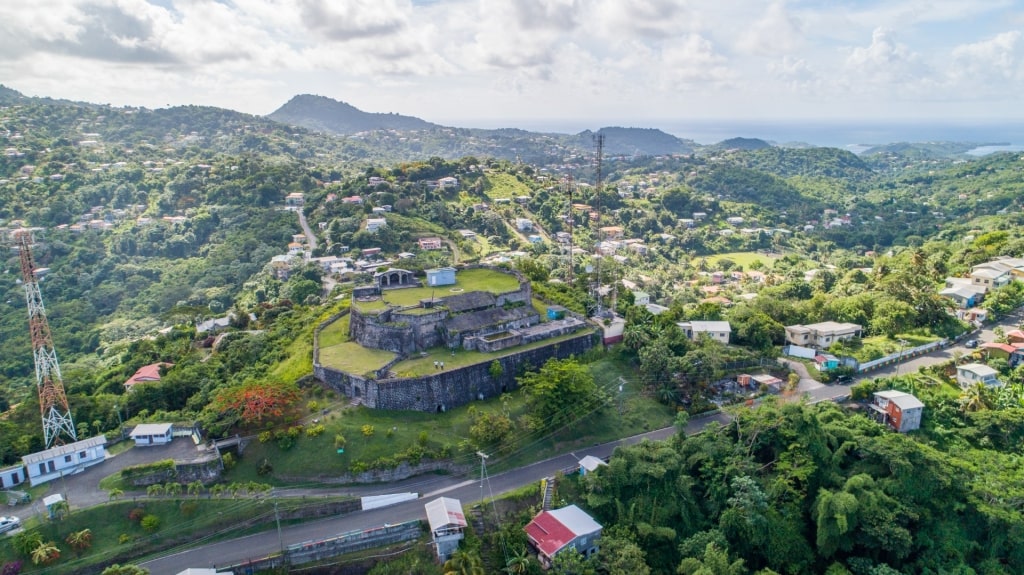
Fort Frederick, Grenada
Grenada is packed with military history. Fort Frederick, started by the French and completed in 1783 by the British, is one of the best-preserved defensive bastions in the Caribbean. While the fort looks imposing, it’s never actually seen active service. You can clamber around the structure, explore the tunnels, and admire the views down over St. George’s some 800 feet below.
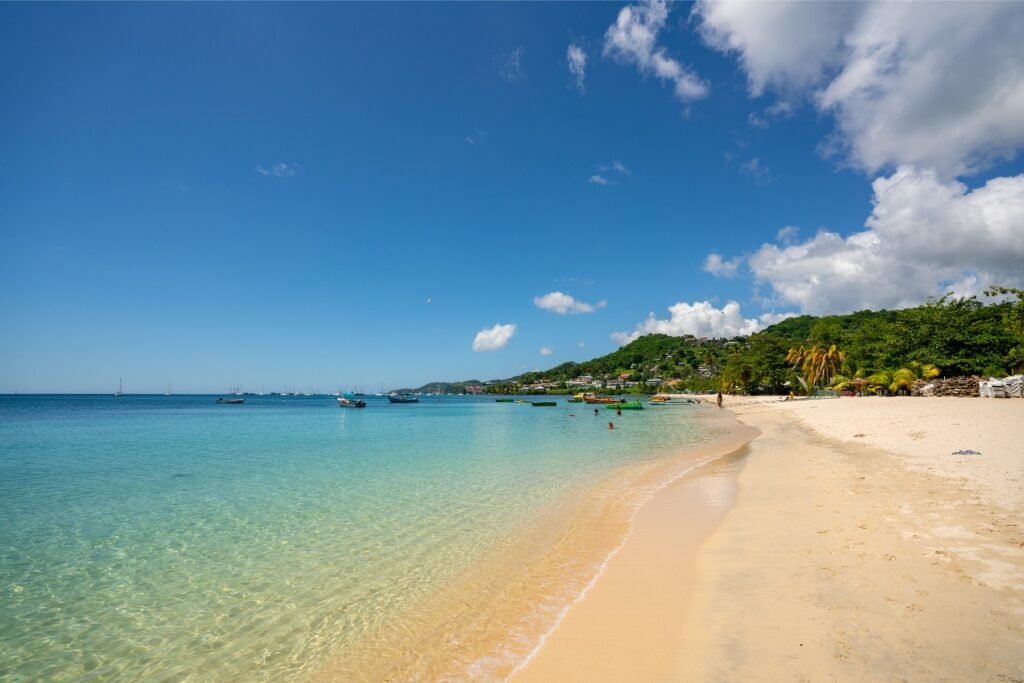
Grand Anse, Grenada
This tiny speck of an island packs in natural beauty, too. Grand Anse, two miles long, is arguably one of the loveliest beaches in Grenada. The lush interior is perfect for hiking; take the hike in Grand Etang National Park and Forest Preserve, where a forest trail ends at a crater lake. Or visit Concord Falls, cascading over the 65-foot rock shelf.
The underwater world around Grenada is fascinating, too. Snorkelers will love Molinere Bay, where there’s an impressive underwater statue installation. The statues are slowly being colonized by marine life, giving them a slightly surreal appearance.
St. Croix, USVI
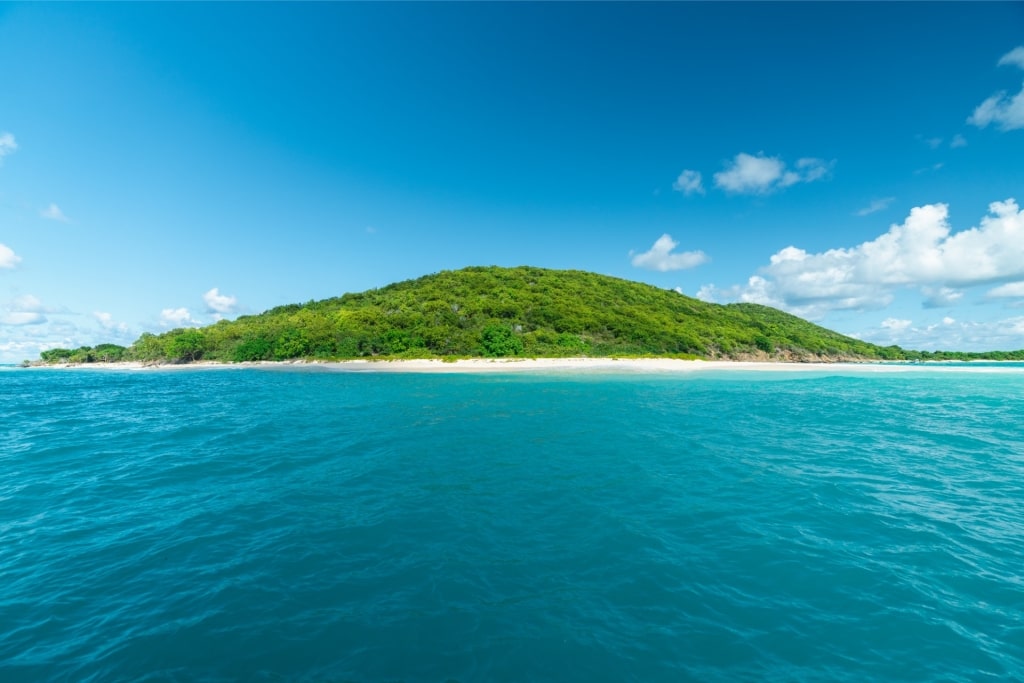
Buck Island, USVI
While St. Thomas is famed for its beaches, its shopping, and buzzing tourist industry, St. Croix, the largest of the U.S.V.I., is very much under the radar in comparison.
The island lies 46 miles south of St. Thomas. It’s mountainous in the north and flatter in the south, the coastal plain dotted with plantation houses and old windmills.
While both islands are fringed with beautiful beaches, St. Croix is the place to head for diving, its waters rich in dazzling reefs, exciting drop-offs, and wrecks. Take a trip to Buck Island, a protected national park, to follow the underwater snorkel trail and look out for sea turtles drifting through the clear water.
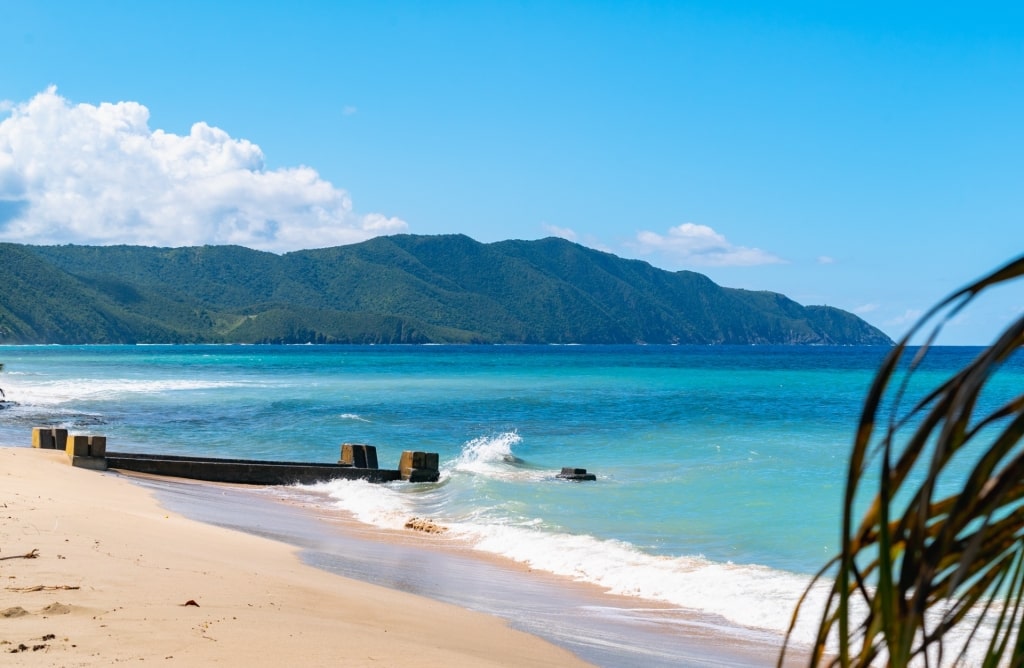
Cane Bay Beach in St. Croix, USVI
Cane Bay Beach, too, is spectacular. A dreamy vision of powdery white sand is no clue to the thrills that lie under the water, where nearby, The Wall offers spectacular diving as the sea bed falls away to 1,000 feet.
There’s plenty to do away from St. Croix’s beaches, too. Head for the Salt River National Park and Ecological Preserve, a thriving mangrove forest where you can kayak.
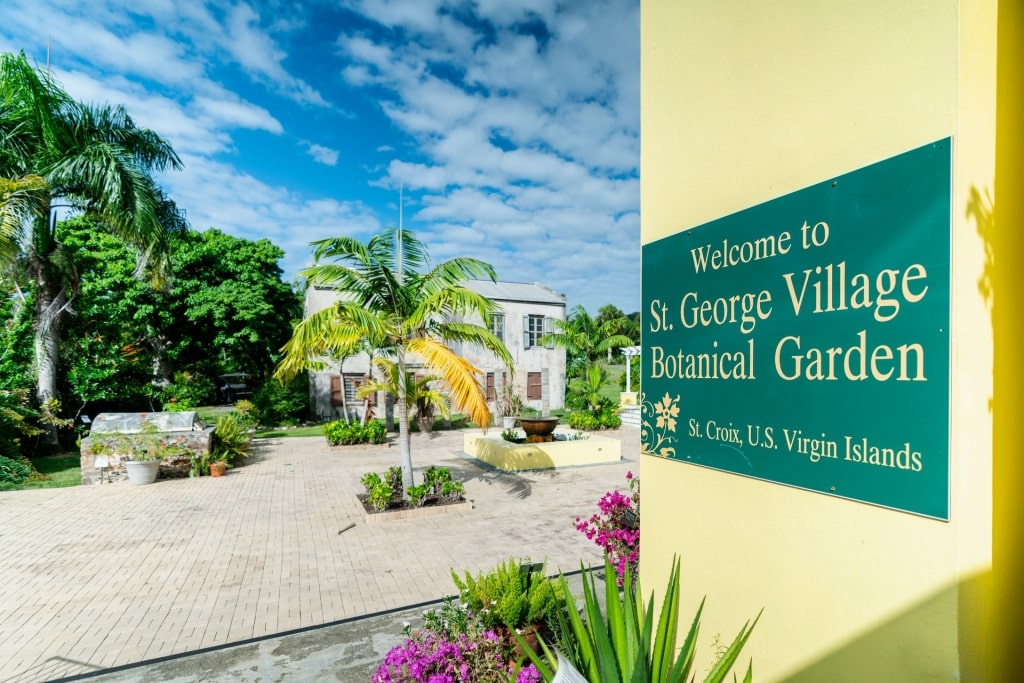
St. George Village Botanical Garden in St. Croix, USVI
Columbus made landfall here when he arrived in 1493. St. George Village Botanical Garden, on the site of a former sugar plantation, is a fascinating insight into the commercial use of plants, from medicines to color dyes and food.
Finally, the 18th century, Dutch-built Fort Christiansvaern is regarded as one of the best-preserved colonial defenses in the Caribbean. Here, you can learn about the island’s history and the growth of its capital, Christiansted.
Grand Bahama
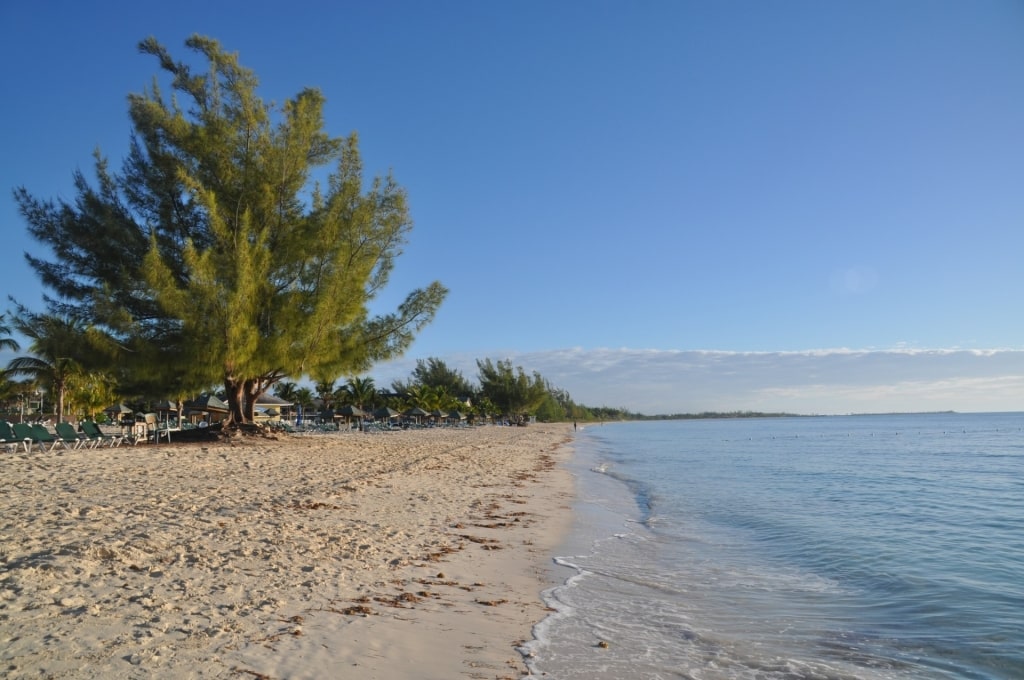
Gold Rock Beach, Grand Bahama
Seemingly always in the shadow of glossy, high-profile Nassau, the capital of New Providence island, Grand Bahama is quieter and more laid back. But you’ll find world-class snorkeling and diving here, golf and shopping, and a highlight, the emerald forests and aquamarine waters of Lucayan National Park.
This 2,000-acre reserve offers hiking on forest trails, kayaking, and beaches. Spend time on glorious Gold Rock Beach and you’re likely to see more raccoons and seabirds than humans. There’s also a lengthy underwater cave system and a couple of the caves can be explored on a snorkel tour.
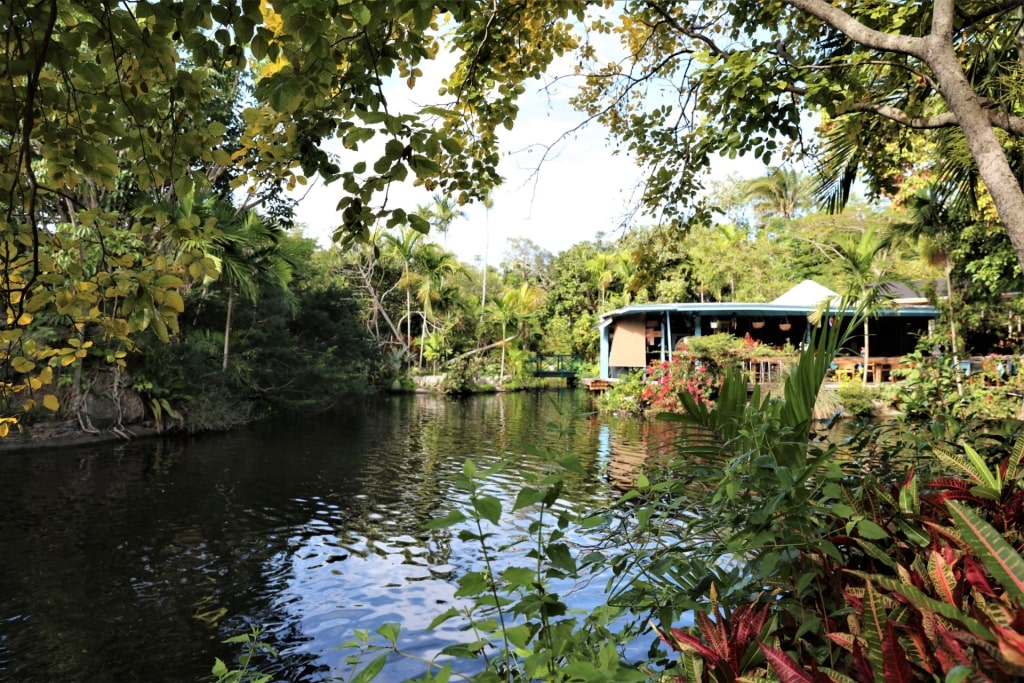
Garden of the Groves in Freeport, Grand Bahama
You’ll have more chances to appreciate nature in Freeport, at the pretty Garden of the Groves, a botanical garden dotted with lakes and waterfalls. You could see migratory birds here, as well as parrots, basking lizards, and butterflies.
If you really want a taste of off-the-beaten-track life in the tropics, head to East End, an area of remote keys, mangroves, and sand flats. This is one of the best places for bonefishing in the Bahamas.
Grand Turk
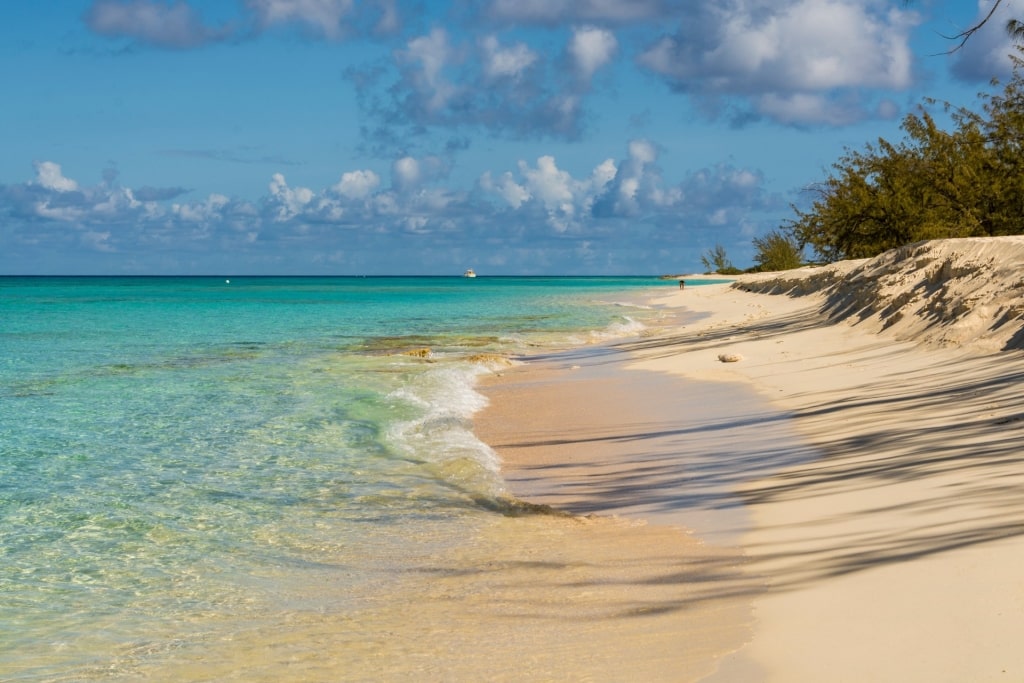
Governor’s Beach, Grand Turk
Providenciales may be the gateway island to the Turks & Caicos, 40 low-lying coral islands and cays scattered across the ocean southeast of the Bahamas—but unsung Grand Turk is arguably a more authentic face of this tropical archipelago.
The coral sand beaches of Turks & Caicos are straight out of a desert island fantasy. On Governor’s Beach, the sand is pale pink, and feathery casuarina trees provide shade. Cockburn Town Beach fringes the sleepy little capital, while Pillory Beach is peaceful, with soft sand, more crystal-clear water, and some good snorkeling spots. Look out for pretty angelfish, electric blue tangs, and toothy groupers as you explore.
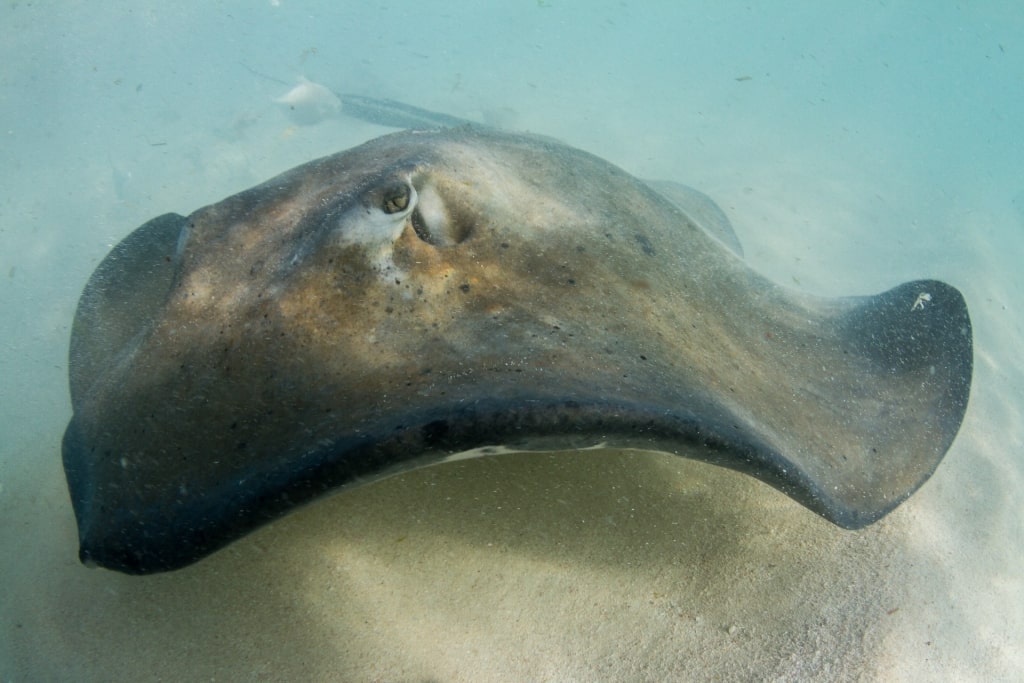
Gibbs Cay, Grand Turk
If you want to see rays, take a trip to uninhabited Gibbs Cay, where southern brown stingrays congregate in the shallows, hoping for tidbits.
Grand Turk is tiny and easy to explore beyond the beaches. You could hike to the British-built Grand Turk lighthouse, which warns ships off the dangerous reefs, and gaze at the salt pans in the center of the island. Join a horseback riding tour on the beach and gallop through the surf, and then find a waterfront restaurant for a lunch of tasty conch fritters and rum punch.
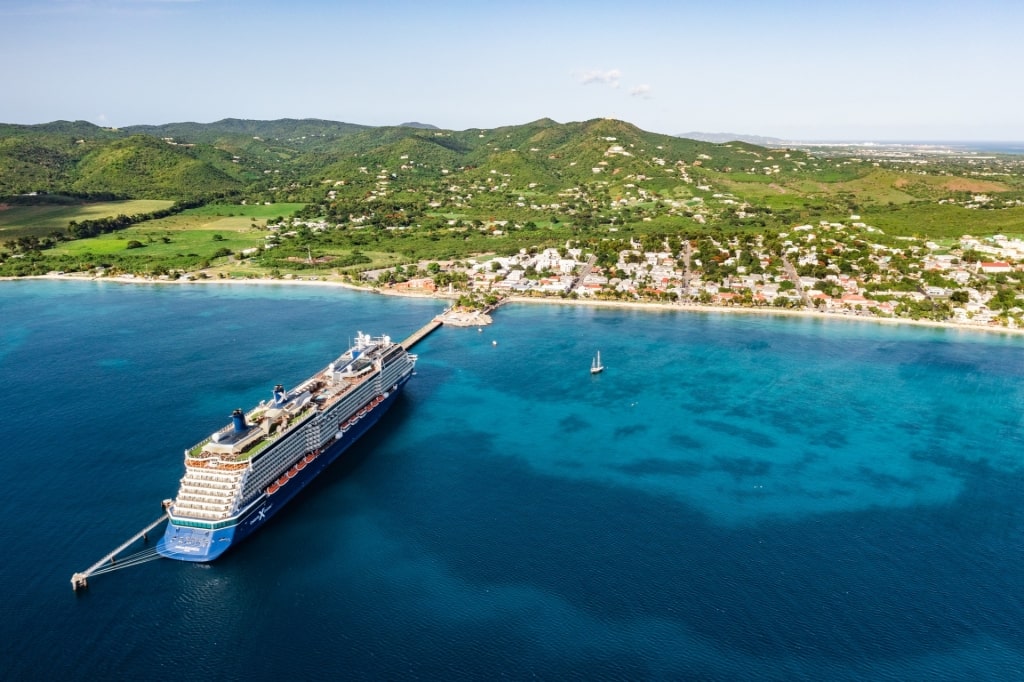
St. Croix
Are you tempted to discover some lesser-known tropical islands? Browse Celebrity’s cruises to the Caribbean and plan your dream vacation.
